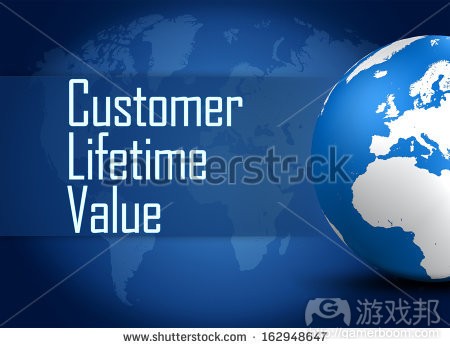开发者分享非游戏手机应用的CLV报告
作者:Daniel Miller-Schroeder
对于现在的我来说,顾客终身价值(CLV)是应用和游戏业务中最重要的参数。如果一位顾客花费了1美元获得了CPA广告并且每次下载平均消费2美元,那么这将创造出印刷钞票一般的效果。在专注于非游戏应用的ASO和IAP转换后,关于广告网络的较高的的顾客获取成本(CAC)让我肯定,那些应用的盈利达到了平衡状态。以下是关于我的一些应用的案例研究;我也希望听到其它有关CLV的经历,关于你的设计是如何影响它,以及“印刷钞票”的理论是否适用等等。
应用1:健康类别
盈利:带有一个关于主要功能的仅需一次付费的IAP的免费文本内容。
CLV:0.04美元
付费墙背后的功能不够强大,不足以超越多次购买。伴随着健全的ASO搜索的免费模式使其成为我所创造的下载量最多的应用,但却不是最畅销的应用。
应用2:娱乐类别
盈利:许多模组功能。1/3是免费的,剩下的属于仅需一次付费的IAP。
CLV:0.20美元
模组化付费功能能够帮助框定它们的感知价值,并创造出更高的转换率。
应用3:娱乐类别
盈利:许多模组功能。1/3是免费的,剩下的属于仅需一次付费的IAP。
CLV:0.50美元
与第2种应用一样,功能模组能够提高转换率。我想CLV更高的话,关于描写内容,屏幕截图和免费功能的价值主张便会更清晰。通过在手机广告网络提出较低的报价,我能够获得0.20美元的安装成本,我想如此便能从投资中赚得150%的收益。我发现付费安装只拥有0.15美元的CLV,从而使其成为一个失败的主张。我仍然尝试着去明确这一问题,就像我认为应用符合那些用户的期待,但是他们却不能接受付费墙。
应用4:音乐类别
盈利:完整的付费
CLV:1.99美元
这获得了免费应用1–5%的下载,实际上没有付费广告点击带来安装结果。这需要2美元以上的CAC,并证实了我关于付费广告只适用于免费应用的假设。
结论
为了真正利用你在创造一款应用或游戏所投入的努力,你就需要找到一种方法让用户能够每天沉浸于游戏中,并激励他们为应用花钱,这才是关键。像Netflix和Pandora的订阅服务便做到了这点,App Store中的每一款最畅销的免费游戏也是如此。如果你专注于创造一款能够让人们玩几天,几周或几个月的优秀游戏,并激励他们在游戏中花钱,那么那些死忠的粉丝一定会买你的单。免费游戏模式可能会让人厌烦,但这却是开发者在销售自己的产品时能够使用的一种最低的价格点。一开始这可能是颗难以下咽的药丸,但如果你专注于为大多数人创造一款出色的游戏以及为其中5%的人创造一款完美的游戏,你便可以以此偿还你所带给这5%用户的价值。
(本文为游戏邦/gamerboom.com编译,拒绝任何不保留版权的转载,如需转载请联系:游戏邦)
Customer Lifetime Value Report: My Non-game Mobile Apps
by Daniel Miller-Schroeder
Customer Lifetime Value (CLV) is, in my current view, the most important metric in the app and game business. If a customer costs $1 to acquire via CPA ads and spends an average of $2 per download, that’s like printing money. After doing moderately well by focusing on ASO and IAP conversion for non-game apps, the high customer acquisition cost (CAC) of ad networks have convinced me that those apps’ monetization have plateaued. Here’s a case study of a few of my apps; I’d love to hear others’ experiences with CLV, how your design impacted it, and whether or not the “printing money” theory hold true.
App #1: Health Category
Monetization: Free text content with one non-consumable IAP for main feature.
CLV: $0.04
The features behind the pay wall were not strong enough to merit many purchases. The free model with healthy ASO research made this my most-downloaded but least-grossing app.
App #2: Entertainment Category
Monetization: Many modular features. 1/3 are free, the rest are non-consumable IAPs.
CLV: $0.20
Modularizing the paid features helped frame their perceived value, resulting in a higher conversion rate.
App #3: Entertainment Category
Monetization: Many modular features. 1/3 are free, the rest are non-consumable IAPs.
CLV: $0.50
As with App #2, feature modularization helped conversion. The higher CLV is, I believe, a result of clearer value proposition from description, screenshots, and free features. By bidding low in mobile ad networks, I was able to get a handful of $0.20 installs, thinking that I would be making a 150% return on investment. I found, though, that the paid installs only had a CLV of $0.15, making it a losing proposition. I’m still trying to figure this out, as I think the app met with those users’ expectations, but they were somehow less receptive to the pay wall.
App #4: Music Category
Monetization: Full version paid
CLV: $1.99
This gets about 1-5% the DLs as the free apps, and virtually no paid ad clicks result in installs. This puts the CAC waayyyyy above $2, validating my assumption that paid advertising only works for free apps.
CONCLUSION
To really leverage all the work you put into creating an app or game, finding a way of keeping users engaged every day and motivating them to keep spending money is crucial. Subscription services like Netflix and Pandora do this, but so do every Top Grossing free game in the App Store. If you focus on making a great game that keeps people playing for days, weeks, or months and motivate them to spend money, the diehard fans WILL pay your bills. The freemium game model can be distasteful, but so is the abysmally-low price point at which developers are forced to sell their products. It’s a hard pill to swallow at first, but if you focus on making a good game for most people and a FANTASTIC game for 5% of them, you can create and get compensated for the value you bring to that 5% of your users.
Should have my first free game ready in a month or two! I’ll add some updates when the metrics come in.(source:gamasutra)








































 闽公网安备35020302001549号
闽公网安备35020302001549号